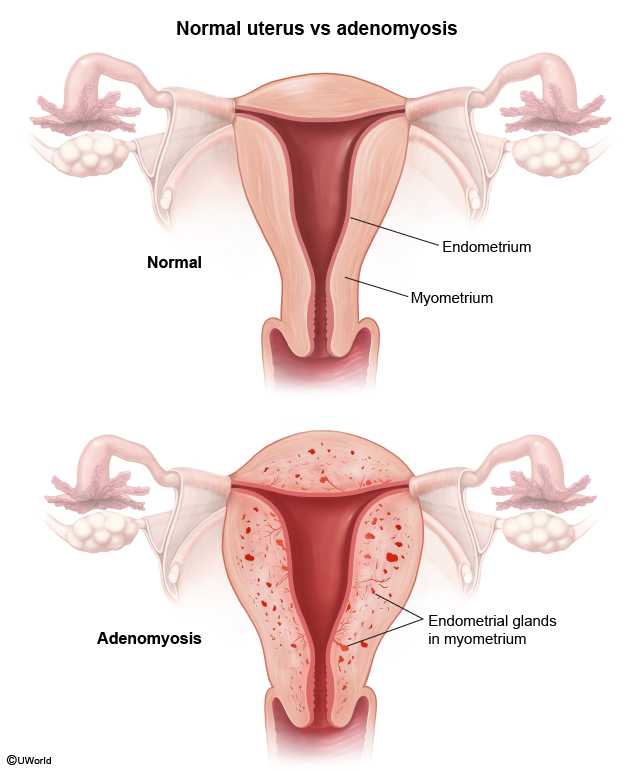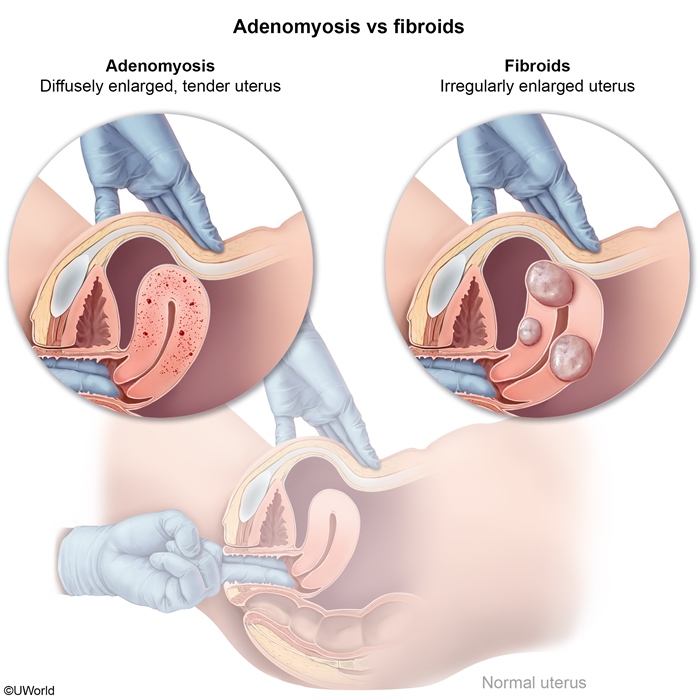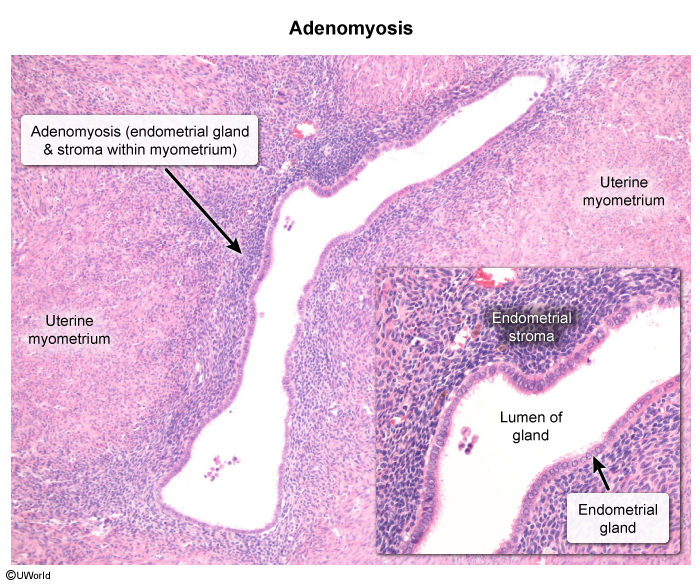Adenomyosis
Article Sections
Introduction
Adenomyosis is a benign gynecological condition characterized by an abnormal collection of endometrial glands and stroma within the myometrium, the muscular wall of the uterus. Patients often present with dysmenorrhea and abnormal uterine bleeding.
Pathophysiology and risk factors
Although the exact pathogenesis is unclear, adenomyosis may occur due to endometrial invagination into the myometrium during periods of myometrial weakening or changes in vascularity at the endomyometrial interface. Therefore, risk factors are often related to these pathologic changes, which include:
- Age: more common in women age 40-50
- Multiparity: particularly in patients with uterine trauma during delivery (eg, postpartum hemorrhage requiring uterine curettage)
- Prior uterine surgery: cesarean delivery, myomectomy
Pathology
Adenomyosis has a gross appearance of areas of dark red endometrial tissue within the myometrium. The lesions may be diffuse or focal, and the affected areas often display myometrial hypertrophy and hyperplasia, resulting in a globular, enlarged uterus. Histopathology, which provides the definitive diagnosis, reveals the endometrial glands and stroma within the uterine myometrium (
Continue Learning with UWorld
Get the full Adenomyosis article plus rich visuals, real-world cases, and in-depth insights from medical experts, all available through the UWorld Medical Library.
Figures


Images
